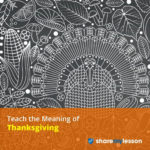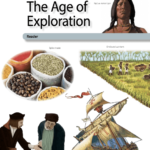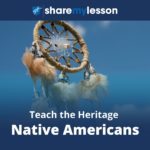November is National Native American Heritage Month, and now more and more schools are recognizing Indigenous Peoples Day, in lieu of Columbus Day, on the second Monday in October. Share My Lesson has curated this collection of free lessons, activities, and videos to assist educators in teaching about the ways of life of indigenous peoples from around the world in order to foster understanding of our shared sense of humanity.
Thanksgiving Lesson Plans & Resources

Find new ways to teach students about the meaning of the Thanksgiving holiday. Share My Lesson’s vetted collection includes free preK-12 lesson plans, activities, and resources that explore this traditional event from multiple perspectives, including a focus on indigenous peoples and studying endangered cultures.
The Age of Exploration (CKHG Unit)

This unit introduces students to European exploration and trade from 1400 to the 1600s. Across 12 lessons, students learn about motivations for European exploration and study specific explorers, learning about their encounters with indigenous peoples. Students are introduced to the early slave trade and the beginnings of slavery in the Americas.
NHD Breaking Barriers: Americans and Native Americans
From the colonial era, relations between European settlers and Native American nations have been complicated. In 1803 Congress authorized and funded an expedition led by Meriwether Lewis and William Clark for exploration of the region and for better knowledge about American Indians of the Northwest in order to develop trade. About 30 years later, the United States forced the removal of Native Americans from their lands to make way for white American settlement. Congress and the president made treaties with Native American nations, but those treaties were not always respected as the United States continued to expand into the west. After Native Americans enlisted and served in both World War I and World War II, Congress passed legislation to begin to address longstanding Native Americans claims against the United States Government.
Not “Indians,” Many Tribes: Native American Diversity
In this unit, students will heighten their awareness of Native American diversity as they learn about three vastly different Native groups.
Native American Cultures Across the U.S.
Teaching children about the First Americans in an accurate historical context while emphasizing their continuing presence and influence within the United States is important for developing a national and individual respect for the diverse American Indian peoples, and is necessary to understanding the history of this country.
Anishnabe/Ojibwe/Chippewa: Culture of an Indian Nation
This lesson provides information and activities about one American Indian Nation, the Anishinabe, called Ojibwe in Canada and Chippewa in the U.S., and engages students in research on its history, location, and past and present culture.
Indian Boarding Schools Primary Source Set
Through photographs, letters, reports, interviews, and other primary documents, students explore the forced acculturation of American Indians through government-run boarding schools.
American Indian Reservation Controversies
Reservation Controversies covers historic issues dealing with American Indian Reservations in the 1870s. This experience uses problem based learning (PBL), in which the student is confronted or faced with a real world problem which has no preconceived right or wrong answers. This scenario puts the student as prospective Indian Agent for the Comanche Indian reservation in 1873. Using various teaching/learning strategies, which include brainstorming, role playing, and oral presentations, the students access primary sources and other background sources to arrive at a recommendation, based on the information. The teacher, librarian, and other support staff act as guides or advisors through most of the process.
Tribal Government
This lesson examines the varied structures and functions of tribal government as well as the relationship these nations have with the United States.
